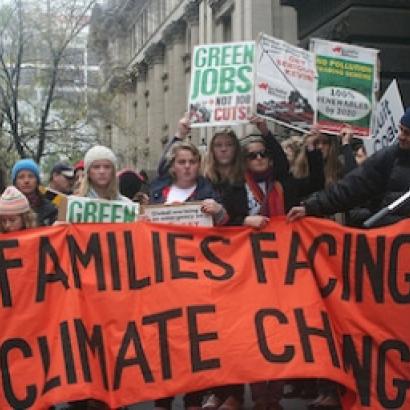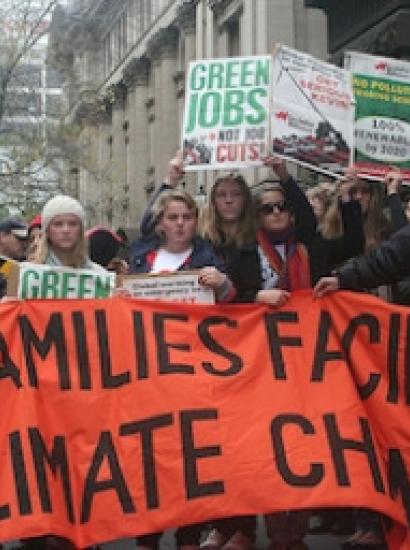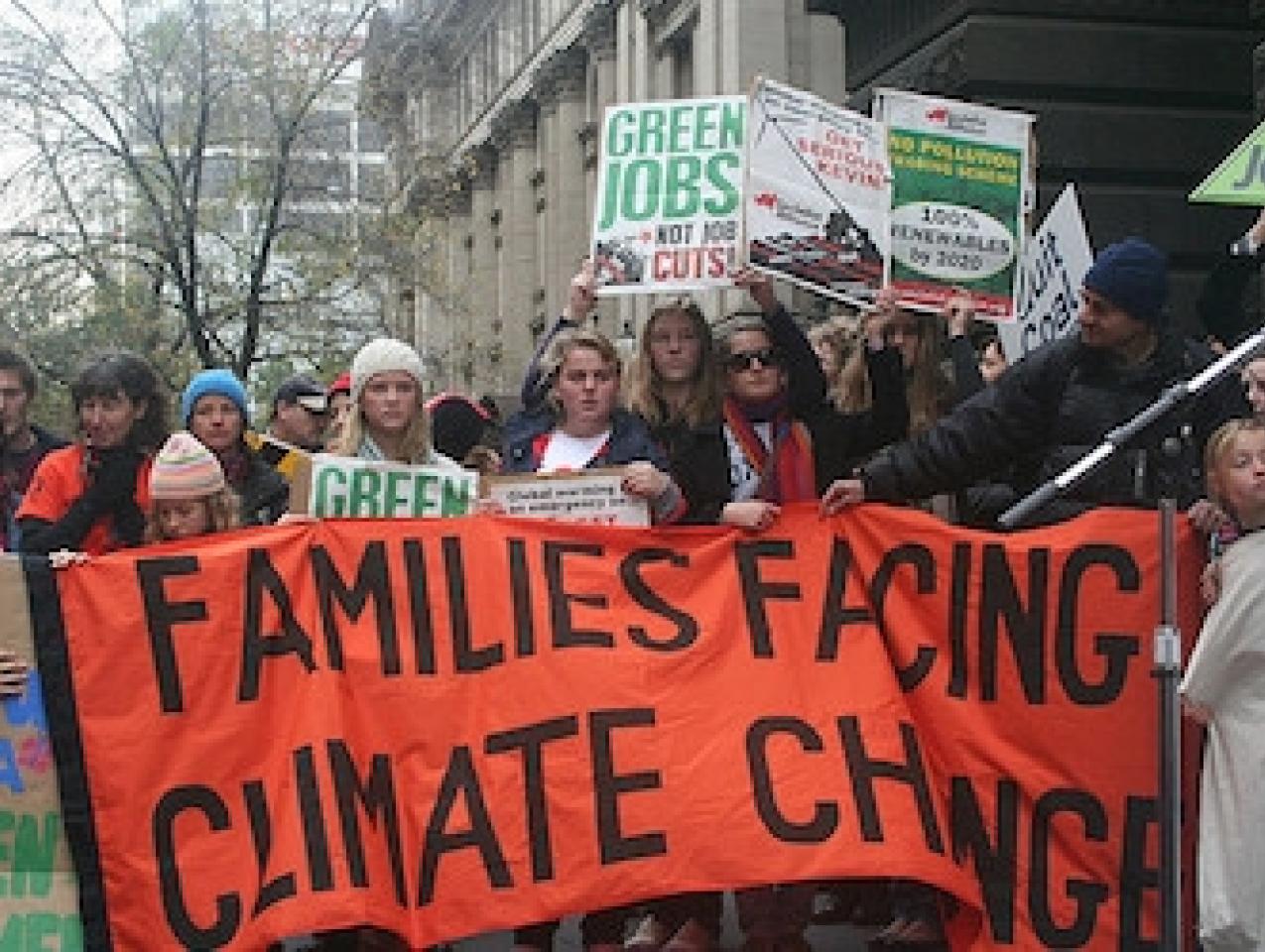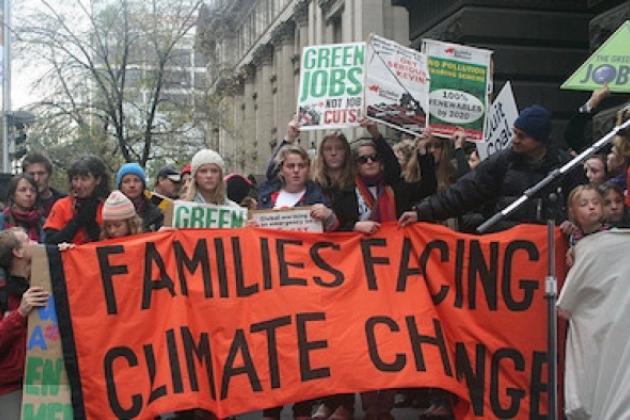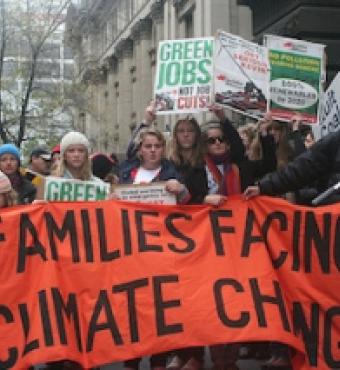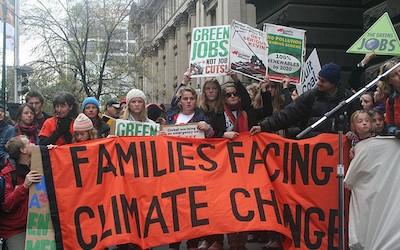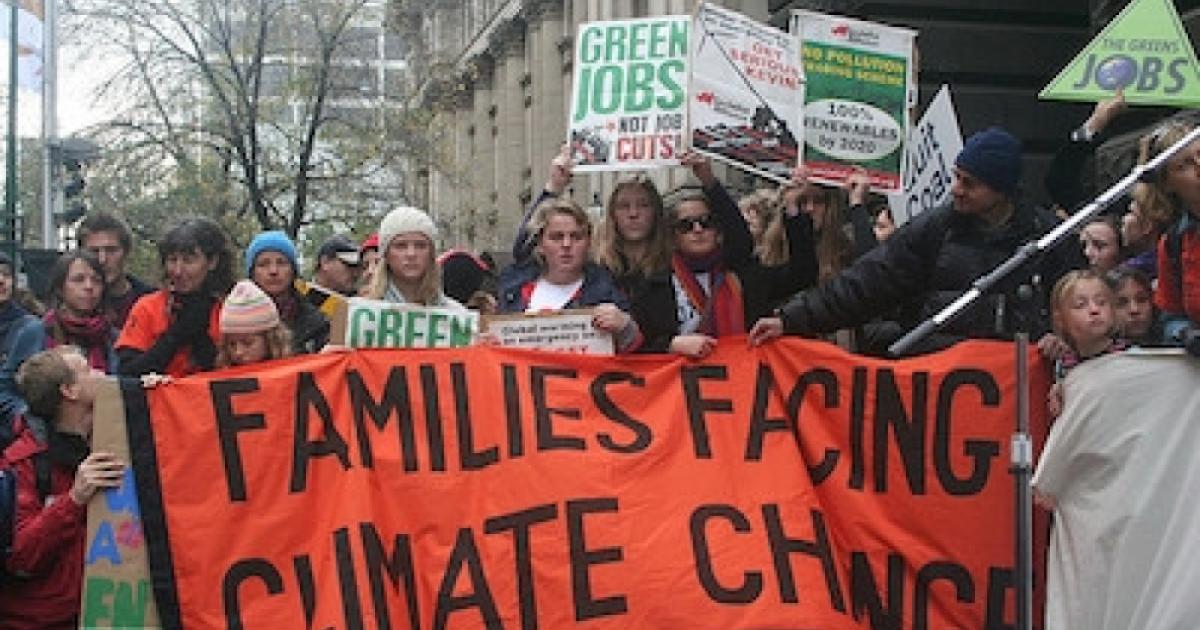- Energy & Environment
The congressionally mandated “National Climate Assessment” has been capturing headlines with gloom and doom, and President Obama is using it as ammunition for his climate war, including his determination to block approval of the Keystone XL pipeline. According to the report, climate change will adversely affect “Americans’ health and livelihoods and the ecosystems that sustain us” by bringing “more frequent and/or intense . . . heat waves, heavy downpours, and, in some regions, floods and droughts.”
News programs reported these conclusions with the backdrop of tornadoes destroying entire neighborhoods and floods eroding roads and dumping cars into raging streams. Dramatic as they are, however, images of single events can’t possibly tell us anything about climate change—past, present, or future. For example, huge chunks of glaciers falling into the sea tell us nothing about whether glaciers are advancing or retreating. A glacier that ends at the sea is always calving. It may be calving nearer dry land if it is receding, but we can’t tell that by the fact that it is calving.
To know whether the climate is changing, we need to compare it to the past, which the assessment does. It finds that U.S. average temperatures have increased 1.5̊ F since 1895, sea levels have risen 8 inches over the past century, and Arctic sea ice is declining.
Making predictions about the future from these past data, however, requires a major leap. Climate forecasters must rely on models that predict the future based on theories about what variables, including greenhouse gases (GHG), cause temperatures to rise. It is from such models that modelers predict future temperatures and, if bold enough, predict how climate will change, something that is much harder to do.
Think of climate like golf. It is easy to see where the ball has landed, but difficult to construct a computer model to predict with much confidence where it will be after the next swing. There are simply too many variables that will determine the future. Pros, of course, have a much better idea of where the ball will land than do amateurs. This is because they have experience with golf, not because they have sophisticated computer models to make the predictions. Similarly, people whose lives are more climate dependent are likely to be better at predicting how it is changing for them and how they can adapt to it, a point emphasized below.
Because climate change is so difficult to predict, the 2014 report from the Intergovernmental Panel on Climate Change (IPCC) admits that it often cannot predict which specific consequences of climate change—for example droughts, storms, or floods—will affect particular places. Reporting on the 2014 IPCC report, the New Scientist magazine says, “The scale and timing of many regional impacts, and even the form of some, now appear uncertain.”
The only way to assess the models is to use past data on climate variables—sun spots, el Nino effect, and GHG, to mention a few—to make predictions of past temperatures and compare the predictions to the actual data. By this measure, climate models are not very good. For example, despite continued increases in GHG emissions, global temperatures have been flat for 15 years. Such results force honest scientists to reassess their models and seek other variables to explain discrepancies between predictions and facts. In the case of flat temperatures, modelers have added the ability of oceans to uptake carbon as an explanation for the “hiatus,” as it is called by the IPCC.
Perhaps it is because the climate is so complex and because predictions from the models are so imprecise that pragmatic Americans are doubtful of climate change. Hence, an April 2014 Associated Press-GfK poll found that 37 percent of respondents were “not too/not at all confident” and another 33 percent were only “somewhat confident” that “the average temperature of the world is rising, mostly because of man made heat-trapping green house gases.” A January Wall Street Journal/NBC poll found 41 percent saying that addressing global warming could be delayed until next year and 29 percent saying it should not be pursued at all.
Given the assessment’s foregone conclusion that humans are causing global warming and climate variation, chapter 17 of the report focuses on “Mitigation”—meaning “reducing emissions of heat-trapping gases.” To the standard decarbonization solutions such as more wind and solar generation and reduced access to fossil fuels brought about by not approving the Keystone XL pipeline, the report emphasizes costly geoengineering projects such as carbon sequestration, seeding oceans so oceans will take up more carbon, and sunlight reflection technology.
Even if all the mitigation were successful, how much would it matter to global warming or climate variation? Climate scientists agree that "some amount of additional climate change . . . is now unavoidable” because of existing stores of GHG in the atmosphere. According to the EPA, “if emissions stopped increasing, atmospheric greenhouse gas concentrations would continue to increase and remain elevated for hundreds of years. Moreover, if we stabilized concentrations and the composition of today’s atmosphere remained steady (which would require a dramatic reduction in current greenhouse gas emissions), surface air temperatures would continue to warm.” Publishing in the “Proceedings of the National Academy of Sciences” (2009), Susan Solomon (National Oceanic and Atmospheric Administration) and several co-authors show that “climate change that takes place due to increases in carbon dioxide concentration is largely irreversible for 1,000 years after emissions stop.” To these findings add the assessment’s conclusion that “There are long time lags between actions taken to reduce carbon dioxide emissions and their effects on its atmospheric concentration. Mitigation efforts that only stabilize global emissions will therefore not reduce atmospheric concentrations of carbon dioxide, but will only limit their rate of increase.”
In other words mitigation to slow or halt GHG emissions will be costly today with little payout over the next 100, if not 1000, years, making it unlikely that large mitigation projects have a positive net present value. And for these results to occur, the United States would have to be joined by the rest of the industrialized nations as well as the developing ones, something that is not going to happen.
Given that mitigation has gained little policy traction, many climate scientists seem to be paying more attention to adaptation. Indeed, the subtitle of the IPCC’s 2014 report is Impacts, Adaptation, and Vulnerability. In contract to earlier IPCC reports, the press release in April mentioned mitigation only once and adaptation 12 times. According to Chris Field, chairman of one of the IPCC working groups, “The really big breakthrough in this report is the new idea of thinking about managing climate change.”
Even National Climate Assessment devotes a chapter to adaptation, saying we need to “better respond to new conditions, thereby reducing harm or taking advantage of opportunity.” However, the proposed adaptation solutions still focus on government. These include managing water supplies to adapt to a changing climate and negotiating international treaties to manage the Great Lakes, the Columbia River, and the Colorado River. In other words, adaptation should come from the top down.
This approach leaves out what is likely to be the most powerful force in the adaptation arsenal, namely individual reactions to market forces. A search of the adaptation chapter shows no mention of markets or prices as mechanisms for adaptation. This is in keeping with previous reports, which assumed that warmer temperatures, rising sea levels, melting polar ice caps, droughts, and floods would do little to induce farmers to change their cropping patterns, developers to change land use patterns, consumers to change consumption habits, or environmentalists to find new methods for conservation. As noted above, however, these are precisely the people most affected by climate variation and therefore best positioned to know when it is affecting them and what they might do about it.
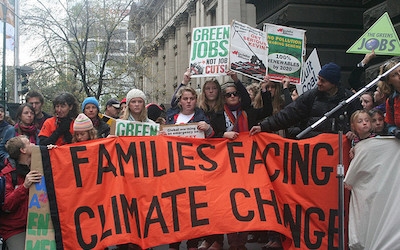
Around the world, people are responding to climate variation and the market opportunities resulting from it in imaginative ways. Consider vintner Matthieu Elzinga, who moved from his vineyard in the Loire Valley of France to an emerging wine region in southern England. Such a move is consistent with the findings of a Conservation International and National Academy of Sciences study predicting that areas suitable for viticulture will decrease “25% to 73% in major wine producing regions by 2050.” Reporting on the study, Bay Area: BizTalk’s headline read: “Wine from Wyoming? How Yellowstone and Yukon will Steal Napa’s Crown”—adaptation at its finest.
Similarly, with predictions of more frequent water shortages, extreme weather events, flooding, and shifts in growing seasons, water markets are beginning to flourish. In his book, Windfall: The Booming Business of Global Warming, McKenzie Funk covers this in a section titled “The Melt.” He describes a conversation with John Dickerson, the founder and CEO of Summit Global Management and its subsidiary, Summit Water Development Group. Although “We still have the exact same amount [of water] in our ecosphere,” Dickerson recognized that “the ultimate effect of global warming is that the percentage that is freshwater is getting smaller, the percentage that is salt water is getting larger, and the maldistribution of freshwater is getting much more severe.” Because these conditions inevitably will lead to higher prices of water, Dickerson has positioned himself well in the water market by purchasing water rights in Australia and the American West.
Financial markets are also responding. Hedge-fund managers are using derivatives to deal with climate variation. Ski resorts, for example, can purchase snow derivatives to hedge against low snow falls. The resort essentially bets against other investors, with the ski resort being paid if snow levels fall below a level specified in the contract or pay if it is above. This helps spread the risk associated with climate uncertainty.
Astute environmental entrepreneurs—enviropreneurs—are also finding innovative ways to achieve their conservation goals in the face of climate variation. For example, the Fresh Water Trust in Oregon is a private non-profit organization dedicated to restoring and preserving stream flows and fish habitat. When there is an abundance of runoff, it has nothing to worry about, but when there is little rain or snow in the mountains, it must compete with irrigators to keep the streams flowing. In some cases it simply purchases water rights and halts irrigation, but in others, it purchases options from farmers. When stream flows are low, the trust exercises its option and pays the farmers to stop irrigating, leaving the water for fish.
Whether you believe or deny the apocalyptic predictions of the National Climate Assessment, it is unlikely that most of them will come to pass—not because of government sponsored mitigation, but because of entrepreneurial adaption. Such adaptation is part of the reason that estimates of the cost of climate change on global income keep coming down. In fact, the 2014 IPCC report lowered the predicted decline from 5 percent “per year, now and forever” (2006 Stern Report) to just 2.5 percent by the end of the century.
With mitigation unlikely to have any effect on global climate, we are fortunate that entrepreneurs aren’t just talking about the weather; they are doing something about it.








